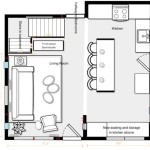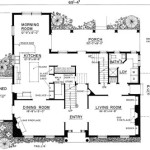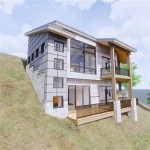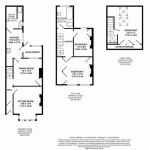Insulated Dog House Plans For 2 Large Dogs
Providing adequate shelter for large dogs, especially when housing two together, requires careful planning and execution. An insulated dog house offers protection from extreme weather conditions, ensuring the comfort and well-being of the animals throughout the year. Addressing the specific needs of two large dogs necessitates designing a structure that is durable, spacious, and properly insulated. This article details considerations for selecting, modifying, or building insulated dog house plans tailored for two large canines.
Before commencing any construction or modification, assessing the dogs' specific needs is crucial. Breed, age, and overall health are significant factors. For example, senior dogs or those with short coats may require thicker insulation and a more accessible entrance. Temperament also plays a role; dogs prone to chewing may necessitate the use of more durable, chew-resistant materials in the construction process.
The scale of the dog house must accommodate both dogs comfortably. They should have ample space to stand, turn around, and lie down without crowding each other. A common mistake is undersizing the structure, which can lead to tension and discomfort. Careful measurement of the dogs' dimensions is therefore essential before selecting or drawing up plans.
Key Point 1: Determining the Appropriate Size and Layout
The internal dimensions of the dog house are paramount. A general guideline suggests that the length and width of the dog house should be at least 1.25 times the length of the larger dog, measured from nose to tail base. The height should be sufficient for both dogs to stand without bumping their heads. For two large dogs, this usually translates to a considerable footprint.
Layout considerations include the entrance, sleeping area, and potentially a small entryway to further minimize drafts. A single, large entrance may be suitable for dogs that get along well, but providing separate entrances can reduce competition and territorial disputes. The placement of the entrance should be offset to one side, creating a more sheltered sleeping area away from direct drafts. An entryway, or vestibule, acts as a buffer zone, trapping cold air and preventing it from directly entering the sleeping area. This can be achieved by adding a simple partition wall inside the entrance.
The interior should be divided into distinct areas, even if only subtly. Creating a slightly elevated platform for sleeping can provide a sense of comfort and security. Avoid sharp corners or protruding elements that could cause injury. Smooth, easily cleanable surfaces are ideal for maintaining hygiene and preventing the buildup of bacteria or parasites.
The floor of the dog house should be slightly elevated off the ground to prevent moisture from seeping in and to allow for air circulation underneath. This can be achieved by building a simple frame using pressure-treated lumber or by placing the dog house on concrete blocks.
Key Point 2: Selecting Suitable Insulation Materials and Techniques
Effective insulation is the cornerstone of a comfortable dog house. The purpose of insulation is to resist heat transfer, keeping the interior warmer in winter and cooler in summer. Several insulation materials are commonly used in dog house construction, each with its own advantages and disadvantages.
Fiberglass insulation is a common and relatively inexpensive option. However, it is crucial to completely encapsulate the fiberglass within the walls to prevent the dogs from accessing it, as ingested fiberglass can be harmful. Additionally, fiberglass can absorb moisture, reducing its insulating properties over time. This necessitates a vapor barrier to protect the insulation from moisture penetration.
Rigid foam insulation, such as expanded polystyrene (EPS) or extruded polystyrene (XPS), offers excellent thermal resistance and is less susceptible to moisture damage than fiberglass. It is also relatively easy to cut and install. However, rigid foam can be attractive to chewing, so it must be protected with a durable interior sheathing, such as plywood or OSB.
Spray foam insulation provides excellent coverage and seals gaps effectively. It expands to fill all available space, creating an airtight barrier. However, spray foam can be more expensive than other options and typically requires professional installation. It is also essential to ensure proper ventilation during and after application to allow the foam to fully cure and off-gas.
Natural insulation materials, such as sheep's wool or recycled denim, are environmentally friendly and offer good thermal performance. They are also less likely to cause irritation or allergic reactions compared to synthetic materials. However, natural insulation materials can be more expensive and may require more specialized installation techniques.
Regardless of the insulation material chosen, it is essential to ensure that it is properly installed and sealed to prevent air leaks. Air leaks can significantly reduce the effectiveness of the insulation and lead to drafts and temperature fluctuations. Sealing all joints and seams with caulk or weatherstripping is crucial.
Key Point 3: Construction Considerations and Material Choices
The structural integrity of the dog house is crucial for its longevity and safety. Selecting durable, weather-resistant materials is essential, particularly for areas exposed to the elements. Pressure-treated lumber is recommended for the frame and base, as it is resistant to rot and insect infestation.
Plywood or oriented strand board (OSB) are commonly used for the walls and roof. While OSB is less expensive, plywood offers better moisture resistance and is generally more durable. For the exterior, consider using exterior-grade plywood or siding materials designed to withstand exposure to rain, snow, and sun.
The roof should be sloped to allow for water runoff. A simple shed roof is easy to construct and provides adequate drainage. Consider using roofing shingles or metal roofing for added protection and longevity. Overhanging eaves can help to protect the walls from rain and snow.
The entrance should be reinforced to prevent damage from chewing or scratching. Metal trim or a durable plastic edging can be used to protect the edges of the entrance opening. A heavy-duty flap or door can be added to further reduce drafts and provide added insulation. However, ensure that the dogs can easily enter and exit the dog house with the flap or door in place.
Adequate ventilation is vital to prevent the buildup of moisture and odors inside the dog house. Small vents can be installed near the top of the walls to allow for air circulation. However, ensure that the vents are screened to prevent insects from entering. The size and number of vents should be adjusted based on the climate and the size of the dog house.
The choice of fasteners is also important. Use galvanized nails or screws to prevent rust and corrosion. Ensure that all fasteners are properly countersunk to prevent injuries to the dogs.
Regular maintenance is crucial to ensure the longevity of the dog house. Inspect the structure regularly for signs of damage or wear and tear. Repair any cracks or leaks promptly. Clean the interior of the dog house regularly to prevent the buildup of dirt, debris, and parasites.
The chosen location for the dog house can impact the comfort of the dogs. Placing the dog house in a sheltered area, away from direct wind and sun exposure, can help to minimize temperature fluctuations. Consider providing shade during the summer months and ensuring access to sunlight during the winter months. A well-drained location is essential to prevent water from pooling around the dog house.
Modifying existing dog house plans to accommodate insulation and two large dogs involves careful consideration of load-bearing capabilities. Adding insulation significantly increases the weight of the structure, and the frame must be strong enough to support the additional load. Reinforce the frame as needed to ensure its stability.

Large Dog House Outdoor For 2 Medium Dogs Petsfit

How To Build An Insulated Dog House With Opening Roof

New Dog House Plans For 2 Large Dogs Home Design

How To Build A Diy Insulated Dog House Wilker Do S

Cold Weather Dog House Plans

Diy Insulated Dog Kennel Clearance

How To Build A Diy Insulated Dog House Wilker Do S

Double Dog House Plans Myoutdoorplans

13 Diy Doghouse Plans And Ideas The House Of Wood

Building A Doghouse Buildeazy








